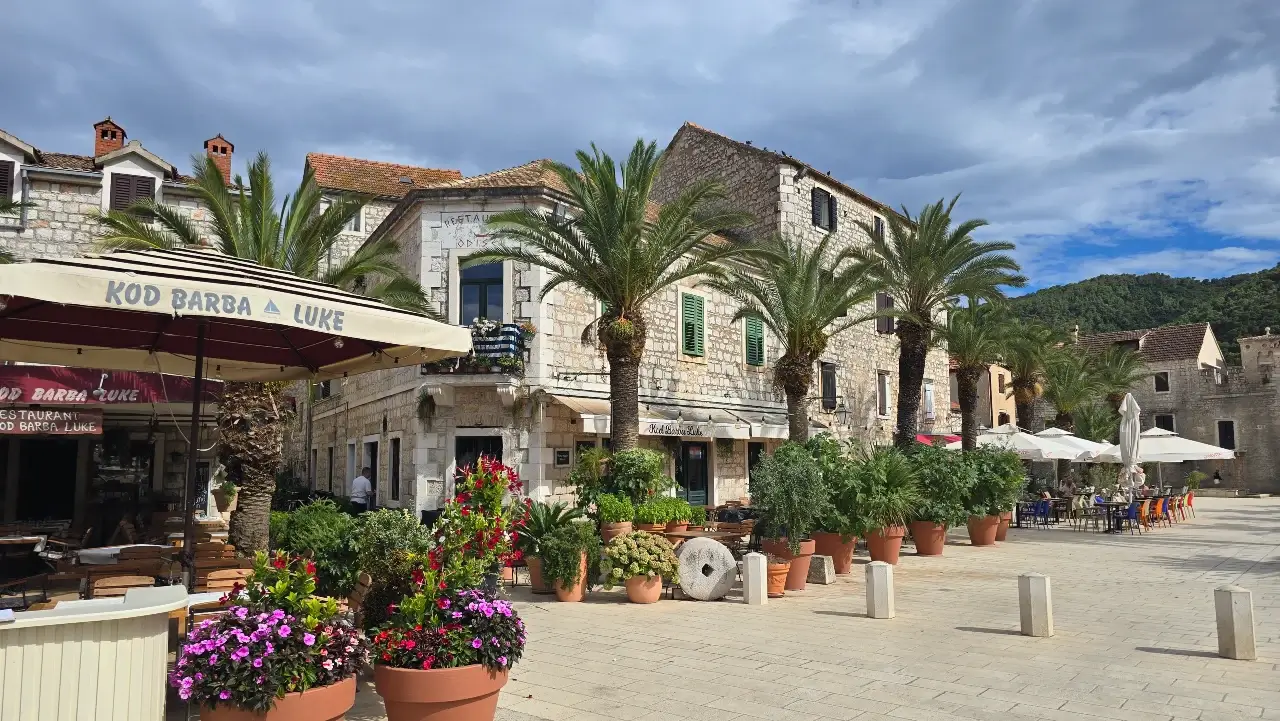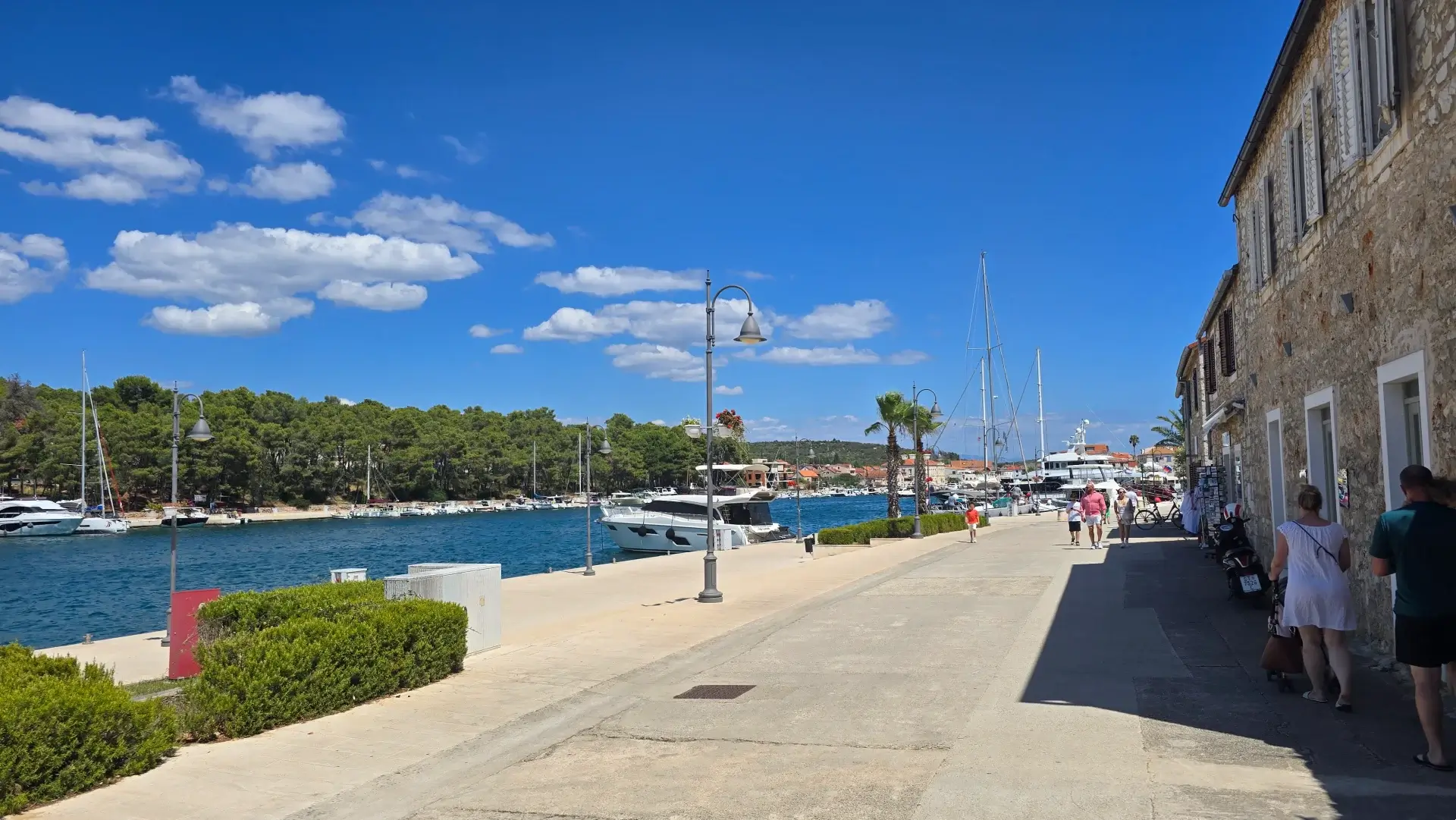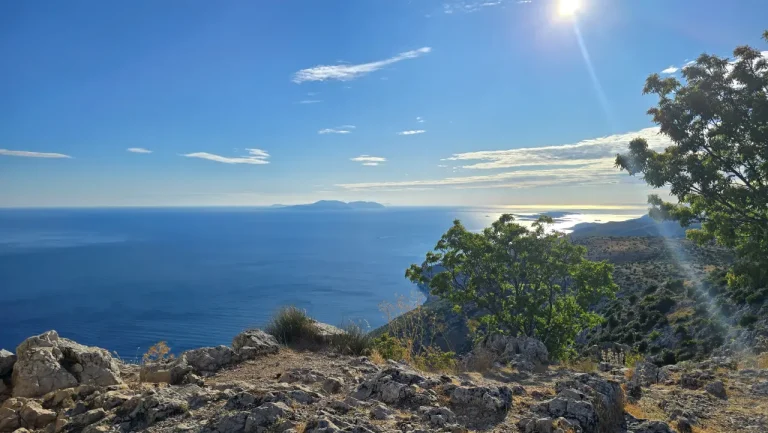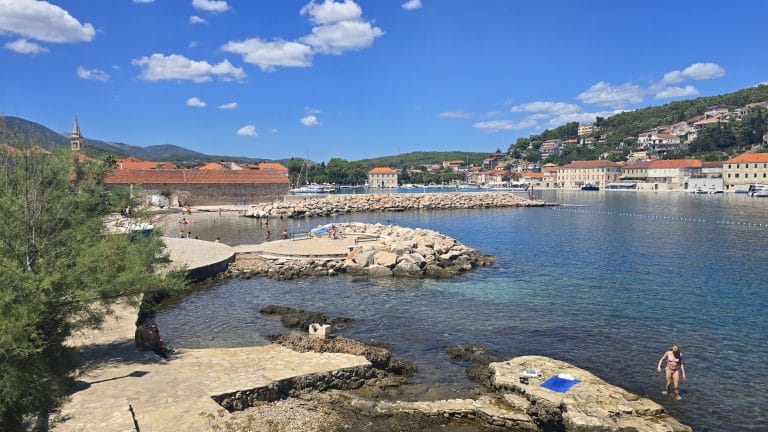The name Stari Grad means Old Town, which is a fitting name for one of the oldest cities in Croatia and Europe. This ancient Greek town was originally called Faros when it was founded in the 4th century BC. Later, the town became the administrative capital of the island and was renamed Hvar. The name Stari Grad emerged when the title of administrative capital was transferred to the town we now know as Hvar Town.
In the video below, I take you on a walking tour around this old town, and we also visit the UNESCO site, the Stari Grad Plain.
Stari Grad Plain
In 2008, I learned that the Stari Grad Plain had been inscribed as a UNESCO World Heritage Site. I wasn’t sure what was inscribed or why, and I must confess I forgot to research it, mainly because I stopped traveling while building my company.
On my second trip to Hvar Island this year, I finally learned the full story about the Stari Grad Plain. We booked a quad tour from Stari Grad, and our guide, Ivica, was a History and Geography professor who knew more about the island’s history than anyone I’ve ever met.
Ivica took us to the Stari Grad Plain, where I learned the following:
- The Stari Grad Plain was inscribed on the UNESCO list because it is the best-preserved example of an ancient Greek agricultural system.
- It is the largest agricultural area in the Adriatic Islands.
- It consists of 75 parcels (called chora), each measuring 900 x 180 meters (162,000 m²). The parcels are divided by dry stone walls.
- Ivica explained that, based on the precision of the divisions, it’s clear that one expert measured and divided the land.
- In addition to the walls, the Greeks built cisterns to store water for irrigation.
- There may be more than the 75 discovered parcels.
- Initially, the Greeks mainly grew wheat in the fields. Over time, the Stari Grad Plain became known for wine production, and today it features a mix of small gardens, vineyards, and olive trees.
The Plain is within walking distance of Stari Grad town. You can also explore the area by bicycle or quad, as we did.
Stari Grad Town
The town itself is centered at the end of the long Stari Grad Bay, located on the northern side of Hvar Island. Stari Grad has a population of approximately 1,800.
The main commercial area is near the head of the bay, where you’ll find a green market, a supermarket, and various other shops.

The southern arm of the bay is home to the old town and the Riva, which is lined with restaurants, coffee bars, and tourist shops. After about 300 meters, the Riva transitions into the New Riva, where yachts are docked, as Stari Grad is popular among sailors. Many moor along the Riva, while others anchor elsewhere in Stari Grad Bay.
What to See and Do in Stari Grad
With its rich history, the town offers several remarkable sights:
- The Archaeological Site Faros (Remeta Garden), where you can see remnants of Greek city walls and artifacts from later periods.
- The Dominican Monastery of St. Peter Martyr, a 15th-century monastery still in operation today. It houses a museum open from May to October.
- The fortified holiday house of Petar Hektorović (Tvrdalj), located on the central square, Trg Tvrdalj Petra Hektorovića, which was established in the 19th century. When the house was built, shallow water was directly in front of it. The house features a historic fishpond (which I unfortunately did not film in my video above) and an impressive garden. One wing of the house contains an ethnographic collection, open to visitors from May to October.
- In front of the house, there is a wishing well, so be sure to bring some coins. 😊
- The House and Mausoleum of Don Šime Ljubić, located at the end of the New Riva. The house is now a B&B, Heritage Villa Apolon, while the mausoleum remains in its original form.

In addition to these sights, I recommend a walk through the old town, where you’ll find many small shops, hidden restaurants, and coffee bars.
In terms of activities, Stari Grad offers a variety of options:
- Boat rental
- Quad rental and quad tours (like the one we did)
- Bike and scooter rental
- Boat tours
- Windsurf rental
- And more…
Visit the website of the tourist board here to see a full program of activities and events taking place during the summer season.
Beaches
The nearest beaches are 1.5 to 2 km from the head of the bay. The most popular ones are:
- Lanterna Beach (south bay arm)
- Stari Grad Beach (north bay arm)
- Bonj Beach (north bay arm)
The beaches near Stari Grad are mediocre; you can find better beaches elsewhere on Hvar Island.
Ferry Port Stari Grad
The ferry port in Stari Grad is located 2.3 km from the head of the bay. You can walk there along the waterfront or take the Arriva bus.
Car ferries from Split arrive at and depart from this port, as it is the main car ferry port on the island. It can get crowded during the summer months.
My Thoughts About Stari Grad
Stari Grad is a pleasant holiday town with excellent hotel resorts, a beautiful Riva, and a charming old town. I think the town is well-suited for families with children and couples. Prices here are similar to those in Jelsa and lower than in Hvar Town.
As Stari Grad is centrally located on Hvar Island, it’s a great base for those who want to explore the island, for example, by bicycle.
FAQ Stari Grad
Do I need a car for a holiday in Stari Grad?
No, if you don’t plan to explore the island, you don’t need a car to stay in Stari Grad.
Are there any good restaurants in Stari Grad?
Yes, there are plenty of good restaurants.
Is it good to visit Stari Grad at any time of the year?
No, the best time to visit is from Easter to mid-October.


